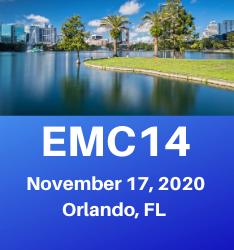|
|
|
|
|
Utility Proposes Changes To Purchase Of Receivables Program, New Discount To Reflect Utility's Costs Of Working Capital, Collections
The following story is brought free of charge to readers by EC Infosystems, the exclusive EDI provider of EnergyChoiceMatters.com
Connecticut Light & Power has proposed changes to its purchase of receivables program, including reflecting new cost components in the discount rate mechanism
CL&P's proposal came in an interrogatory response in a PURA proceeding examining potential changes to the POR program, including the potential for supplier-specific discount rates (see more background on the proceeding here)
CL&P, as more fully discussed below, does not favor a program with supplier-specific discount rates, but did offer several proposed changes, noting that the current program only provides a cost to suppliers for a discount factor for the uncollectible expense.
CL&P proposed the following measures:
• Requiring more frequent updates to the POR discount factor, and review of more recent history to base the discount factor calculation on. "The current calculation methodology provides for an annual update and is further based upon an historical 2-year average of uncollectible expense and revenue, which would not immediately reflect the impacts caused this year by COVID-19," CL&P noted
• Incorporating a provision for working capital. "The EDCs are incurring costs of paying for competitive supplier accounts receivable in advance of receiving payments from customers, similar to the delayed payment by customers of delivery-related and commodity-related charges on electric bills. Instead of modifying when an EDC pays competitive suppliers for the accounts receivables an EDC purchases, an EDC could potentially calculate the cash working capital impact of continuing to pay competitive suppliers on a normal payment lag while customer payments are coming in significantly later, and defer that amount for recovery competitive suppliers," CL&P said
• Incorporating a provision to also recover the cost of collections because the current discount factor only covers the uncollectible expense resulting from customer utility accounts that are written off.
• "Finally, the Company supports a revision to the current POR process that maintains a single factor that applies to all suppliers. This mechanism allows for a more flexible calculation to allow for changes that would benefit ratepayers and minimize the cost of billing system and allow for a timely implementation that is not delayed due to the complex process involved with a billing system change," CL&P said
CL&P said that, "because the current POR mechanism requires an EDC to bill customers for the supplier-provided energy -- and because the EDC also has the responsibility and risk of recovering the amounts billed from customers -- the market conditions resulting from COVID-19 are expected to increase the cost incurred by the EDCs as the level of accounts receivable increase. Due to market conditions as a result of COVID-19, Eversource anticipates that customers will take longer to pay their bills and, as a result, higher amounts of customer account balances will eventually become uncollectible."
CL&P does not support a change in the POR program to require individual supplier discount factors, "because it would impose additional upfront and ongoing costs to administer such a change with little or no perceived benefit to customers."
Regarding supplier-specific discounts, CL&P said, "Eversource believes there are several cons to this proposal. First, the current method to calculate the uncollectible factor that is used to reduce the third-party supplier payments uses uncollectible expense divided by total customer revenue. Due to the method used by the Company to determine uncollectible expense, identifying the amount applicable to individual retail electric suppliers is not feasible. This is primarily because the uncollectible expense includes uncollectible reserve adjustments that cannot be allocated to retail electric suppliers. The uncollectible reserve is not maintained separately by the Company from supplier related receivables. If the Authority ordered the EDCs to use an individual uncollectible factor, the Company proposes the calculation be based on the amount of customer write-offs and revenues associated with the customers energy revenue, grouped by each supplier supplying the energy."
Regarding supplier-specific discounts, CL&P said, "Another con is the additional administration that would be required by the EDCs if they were required to utilize individual uncollectible factors for the more than approximately 40 plus suppliers. The EDCs would be required to perform significantly more work to perform these calculations, which would be unduly burdensome to the EDCs."
Docket 20-01-33
ADVERTISEMENT Copyright 2010-20 Energy Choice Matters. If you wish to share this story, please
email or post the website link; unauthorized copying, retransmission, or republication
prohibited.
Utility Cites Expected Increase In Uncollectibles, Costs To Utility Due To COVID-19
July 13, 2020
Email This Story
Copyright 2010-20 EnergyChoiceMatters.com
Reporting by Paul Ring • ring@energychoicematters.com
NEW Jobs on RetailEnergyJobs.com:
• NEW! --
Director - Distributed Generation, Demand Response, & Market Participation -- Houston
• NEW! --
Retail Energy Account Executive -- Houston
• NEW! --
Business Development Manager
|
|
|
|









